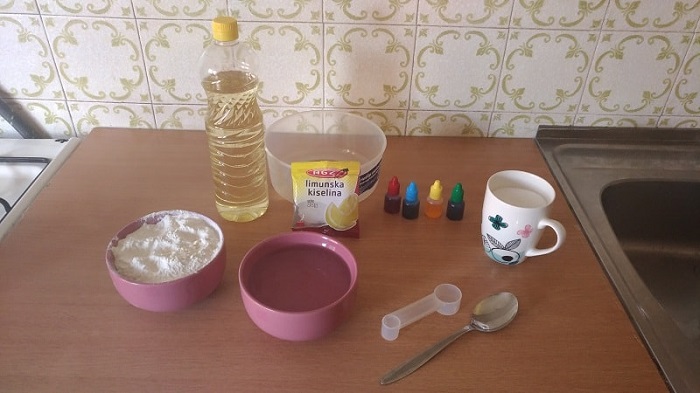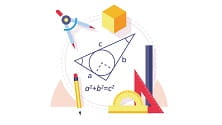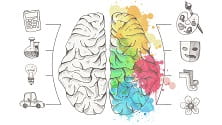Does your child like to play with playdough? Well, who doesn’t! In this article, we will show you how to make your own playdough and learn science while doing it
Playdough is an amazing toy for your child. It allows for so much creativity and discovery. While touching, squeezing and poking it, playdough provides a wide range of sensory stimulation. We wrote extensively about sensorimotor development and activities that promote it. If you are interested in finding out more fun activities, check out the Sensorimotor activities article.
Playdough is in a category of “mushy” sensory toys. Main modes of play are squishing, stretching and building with it. Also, kids learn that every action has consequences. It develops hand-eye coordination and improves fine motor skills. Because it’s calm activity, it helps your child to release their stress level and helps them to restore balance if they are overstimulated.
So it is a good idea to have some playdough around, and we will show you how to make your own – fast and easy way.
Science behind playdough
Cooking is all about the chemistry! And making playdough is a great example. You have mixtures, solutions, heating and all kinds of interesting chemical reactions taking place.
Including your child in the playdough preparation is a great intro to various chemical ideas. Kids can help measure, mix the ingredients and of course predict and note results. You can explore what is mixture by combining flour and salt – two substances that mix but produce no chemical reaction. Water is amazing solvent – just try mixing it with few drops of food coloring. Now you have the solution! But oil and water don’t mix because oil is a nonpolar molecule. Find out more about that in another fun activity where you can learn how to make a Lava lamp.
Put all that stuff in the bowl and give it a good stir while heating it. Many chemical reactions are happening and the end result is something completely different – a new substance. Flour contains proteins and when they are mixed with water they change their shape and become more stretched. Salt allows this structure to hold its shape and also helps to prevent dough from going bad. Oil also has its role – it gives moisture needed so the substance is not crumbly. Citric acid helps with elasticity. In the end, you get awesome mushy and stretch substance ready for sensory exploration!
Of course, there are more recipes and a fun way to experiment with children is to try different combinations and see how the result differs.
Materials needed for a Homemade Playdough:

- 2 Cups of Flour
- 2 Cups of Water
- 1 Cup of Salt
- 1 Spoon of oil
- 2 Teaspoons of Citric acid
- A couple of Food colors
Instructions to make a Homemade Playdough:
For step by step instructions on how you can make your own playdough, watch the video at the beginning of the article or continue reading step by step walkthrough.
- Mix together Flour, Salt and Citric acid in 1 bowl.
- In another pot, put Water and Oil.
- Then put the content of the first bowl in a pot and mix it all together until it becomes a thick mass.
- Now turn on the light fire and continue to mix it for around 4 minutes until it’s not sticky anymore.
- Knead the dough while it’s still warm and split it in as many parts as you want.
- Make a hole in
dough and put few drops of food color in it and knead it until it’s evenly colored. For ideas of how to mix colors check the article about mixingcolours activity. - Continue part 6 for every piece of dough you made mixing colors as you wish.
- Congratulations! You just made your own Playdough. Now it’s time to have fun with it!
What will you develop and learn by making your own playdough?
- Creativity and imagination
- Hand-eye coordination
- Fine motor skills
- Chemistry principles
- Scientific method
- Primary and secondary colors
If you’re searching for some great STEM Activities for Kids and Child development tips, you’re in the right place! Check the Categories below to find the right activity for you.

STEM Science
Videos, guides and explanations about STEM Science in a step-by-step way with materials you probably already have at your home. Find new Science ideas.
Read more
STEM Technology
Videos, guides and explanations about STEM Technology in a step-by-step way with materials you probably already have at your home. Find new Technology ideas.
Read more
STEM Engineering
Videos, guides and explanations about STEM Engineering in a step-by-step way with materials you probably already have at your home. New Engineering ideas!
Read more
STEM Math
Videos, guides and explanations about STEM Math in a step-by-step way with materials you probably already have at your home. Find new Mathematics ideas.
Read more
Psychology
Find out all about development psychology topics that you always wanted to know. Here are articles from child psychology and development psychology overall.
Read more
First year of Child’s Life
Following a Child’s development every month from its birth. Personal experiences and tips on how to cope with challenges that you will face in parenting.
Read more
6 thoughts on “How to make Homemade Playdough and learn Science while doing it”